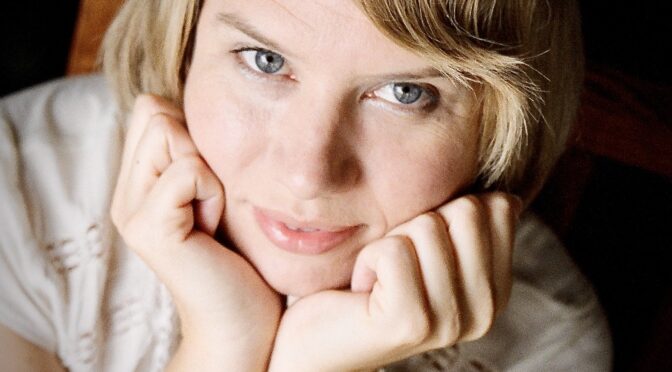Woman Behind the Monitor (and the Mic): Anji Bee
“The Sexiest Voice in Podcasting” Anji Bee of the Chillcast talks about the show and her double life as both podcaster and musician.
TREVOR: How did the Chillcast get its start?
ANJI: I guess you could say The Chillcast got its start with college radio DJ’ing. After 3 years of doing various shows and working in management at a college radio station, I was pretty well hooked. Then I discovered Internet radio, and started creating both live and prerecorded Internet radio content – including interviews with indie bands like Hungry Lucy and Sunburn in Cyprus. Eventually podcasts were invented, and I put 2 and 2 together. Podcasting was better than radio because listeners could tune in whenever was most convenient for them – which seemed really revolutionary! My first podcast was actually Chillin’ with Lovespirals, which Ryan and I launched to help promote our 2nd album, Free & Easy. Shortly after, I started getting permissions from indie band friends to create a weekly music show podcast – because you have to understand that at this time the podsafe music movement was barely getting started! Adam Curry had just begun his Podsafe Music Network — which is actually how he and I met and became friends, when Lovespirals joined the site. Adam played us on the Daily Source Code, and then we started talking back and forth on his podcast about Creative Commons vs BMI and all those kinds of things. To make a long story a bit shorter, I put together a few fledgling episodes of The Chillcast, hosting them on the Internet Archive site and C.C. Chapman, who was really active with PodShow at the time, pitched the show to Adam and PodShow management, and I was signed as one of the first group of podcasters to the new PodShow Podcast Network.
TREVOR: What have you learned from operating on both sides of the broadcasting world, as a podcaster and as a musician?
ANJI: Good question. Podcasting is a great way to communicate with your fans, to give them a sense of who you are as a person, as well as to inform them of your latest projects. You can really build a sense of brethrenship, not only with your fans, but fellow indie musicians and fellow podcasters. Podcasts are more intimate than a newsletter, less time consuming than a forum, and both more immediate and long lasting than a personal appearance. I’m surprised more bands aren’t doing podcasts, actually.
TREVOR: Chillin’ with the Lovespirals was one of the earliest band podcasts, what was the impetus behind such inspiration and foresight?
ANJI: Well I mentioned this briefly in your earlier question, but the idea was to share information about the new album we were releasing, and what better way to promote an album than with the music itself? We had shared audio interviews we’d done with radio stations in mp3 format on music sites for years, so I knew people liked to listen to us talk about our music and band experiences. We have all the recording gear here at our disposal, so it just seemed logical to produce our own audio content and make it available via our site. We had fun doing it, too. At that time, iTunes was just launching their podcast directory, so getting listed on that was a real thrill.
TREVOR: Why should a band be PodSafe?
ANJI: Podcasts are a very low cost promotional tool. Unlike radio, it’s very easy to break into the podcasting world. There are still relatively few bands vying for attention on podcasts. If your music is good, you’re bound to get noticed. And podcast subscribers are truly interested in music. These are the cutting edge people who have sought out an alternative form of entertainment; they’re serious. If they like something they hear on a show, they actually go out and buy it. I get email and comments all the time about buying music from my shows — in fact, I got one this week from a guy who was sad that Sun Dula Amen wasn’t on iTunes yet, because he wanted to buy it! And of course, I know for a fact that I sell my own CDs from podcasts, I see the proof from orders on the Lovespirals Webstore.
Read the rest of this interview with Anji Bee on the CyberPR Blog

